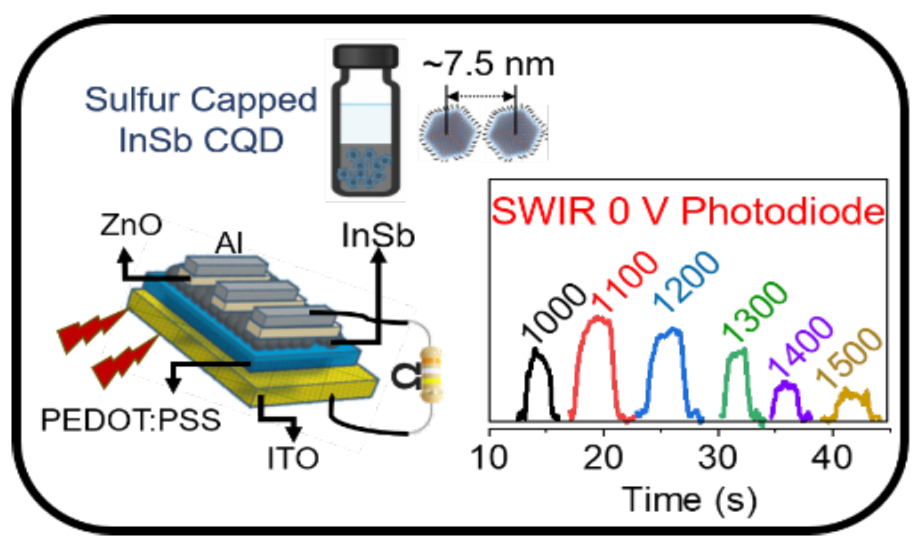Nanomaterials Field
Nanoparticle Group
Our group has developed novel colloidal quantum dots and is working to develop cutting-edge materials for optoelectronics and bio-applications.
Group Leader: Naoto Shirahata
Colloidal synthesis of novel semiconductor nanocrystals for solution-processed photodiodes and Cancer Theranostics
Current Topics
Two research topics are shown in this digest. First topic involves the rational doping strategy to build the first solution-processed p-n homojunction architecture towards silicon quantum dot (Si QD) photodiodes.1 Semiconductor p-n homojunction is a requisite building block of operating transistors and diodes which make up the modern electronic circuits and optoelectronic applications. However, it has been so far limited to bulk form of single crystals such as Si. In this study, we developed a brand-new method of constructing p-n homojunction architectures that breaks through the limitation. Colloidal inks of p-type and n-type Si quantum dots (QDs) were synthesized in the first step.The orthogonal solvent trick made clean interfaces between n-type and p-type SiQD layers without disruption on film formation. The forward and reverse current-voltage characteristics of the diode, along with various spectroscopic characterizations, demonstrate the formation of the first p-n homojunction of SiQDs.
In the second topic, solution-processed InSb-based SWIR photodetector was reported for the first time. The III-V QDs are expected to replace lead- and mercury-based counterparts that are hampered by reliance on restricted elements (RoHS). However, the use of III-V QDs as photoactive layers in SWIR optoelectronic applications is still a challenge because of underdeveloped ligand-engineering for improving the in-plane conductivity of the QD assembled film. In this study, we reported on ligand engineering of InSb CQDs to enhance the optical response performance of self-powered SWIR QPDs.2 Specifically, by replacing the conventional ligand (i.e., oleylamine) with sulfide, the interparticle distance was shortened, leading to improved carrier mobility for high photoresponse speed to SWIR light. Furthermore, the use of sulfide ligands resulted in a low dark current density (~nA/cm2) with improving an EQE of 18.5 %, suggesting its potential for use over toxic-based infrared image sensors (see Figure 1).

Fig. 1. Solution-processed InSb quantum dot photodetectors that respond to the SWIR light.
Outline of Research
Controlling the fate of free-charge carriers generated in semiconductor nanocrystals including quantum dots (QDs) through the sequential absorption of photons or under applied voltage determines their optical properties and device performances of various applications.1 To achieve the goals, we start our work from the synthesis of the colloidal QDs and take advantage of their quantum states that capture and release to energy storage and conversion to develop the cutting-edge materials in optoelectronics and bio applications.
References
- B. Ghosh et al., Small Science 4, 2400367 (2024). DOI: 10.1002/smsc.202400367
- S. Chatterjee et al., Nanoscale Horizons 9, 817-827 (2024). DOI: 10.1039/D4NH00038B
- J. J. Chen et al., ACS Mater. Lett. 6, 3218-3225 (2024). DOI: 10.1021/acsmaterialslett.4c00860
- S. Chinnathambi et al., Sci. Rep. 14, 9618 (2024). DOI: 10.1038/s41598-024-60536-2
Group members
-
 Naoto Shirahata・Group Leader
Naoto Shirahata・Group Leader -
 Hong-Tao Sun・Principal Researcher
Hong-Tao Sun・Principal Researcher


